by Keith Kendig
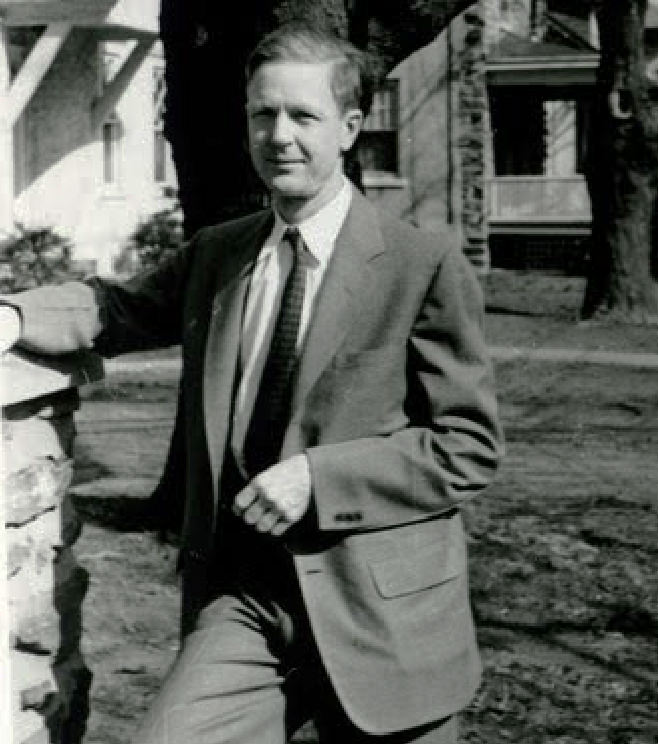
Hassler Whitney (March 23, 1907 – May 10, 1989) was one of the most original and influential mathematicians of the twentieth century. He created the field of differential topology, and familiar terms such as cohomology, coboundary, cocycle, cup and cap products, cohomology ring, are all his, stemming from his foundational work in topology. He gave the definition of differentiable manifold still used today, and proved that any differentiable manifold can be embedded in Euclidean space. His two embedding theorems can justifiably be called the grandfathers of all embedding theorems, and were the precursors of hundreds of different embedding theorems seen today in geometry and algebra.
How did he do it? Whitney’s story is fascinating. His tale flies in the face of nearly everything conventional, and is one likely to surprise most people. He was not a mathematical prodigy who gobbled up textbooks and knew more math than any of his school peers might ever hope to know. He reminisced later in life that “Thankfully, I took almost no math courses in either high school or college…” He felt just plain lucky to have missed a hail of bullets. So again, how did he do it?
The answer seems to lie in how distinct personality traits and early family influences worked together to form the person. We start our story by listing some of his personal traits, as well as his main family influences. We tell the big story itself as a sequence of vignettes — little snippets of things he did or things that happened to him. In the end, his unusual story makes very good sense. In 1967, Deane Montgomery offered an interesting perspective on just how successful he was. (Montgomery contributed significantly to solving Hilbert’s fifth problem, and for some years headed the School of Mathematics at the Institute for Advanced Study in Princeton.) “If you were to ask a good sampling of first-rate mathematicians to list the top 10 mathematicians in the world, Whitney would be on nearly everyone’s list.”
Personal traits
He was happiest when he was free, and became distinctly unhappy when trapped in a situation — social or otherwise — that was not to his liking. He’d use wit, humor or simply abruptness to extricate himself from such a situation. He hated being enslaved in any form. In high school and college, he almost never read through a mathematics text or worked through the book’s problems. Instead, he would either make up his own problems, or run across a problem that caught his fancy, and then learn whatever math was needed to solve it.
When interested in something, he could be endlessly persistent.
When he was a youngster, it was not at all clear that he would end up as a mathematician. He had a keen interest in the real world and in how things work. His early interests were in large part like those of an engineer or possibly a physicist. He liked to run little scientific experiments, and would build small machines or some apparatus that he needed. His favorite magazine was Popular Science, and he would eagerly await the next issue. Ideas in it sometimes inspired new construction projects.
He never liked grade school. He once said that if he didn’t have to contend with school, there would be enough time in the day to accomplish what he really wanted to do.
He had a distinctly contrarian streak, and often sought the opposite to the conventional or unwritten norm. As a kid, he learned to roller-skate backwards almost as well as he did forwards. Later in life, when encountering a theorem new to him, he would often begin by trying to disprove it, looking every which way for some counterexample. After a period of rough and tumble, he often ended up with a depth of understanding that most people never get by merely accepting the theorem and following through its proof.
He was very concrete in his approach to math. He would find a specific example containing the essential difficulty, and would work with it until he thoroughly understood it. He got critical insights by working with his example, and used those insights to arrive at new results. After cracking the central nut in a new area, he would usually leave it to others to generalize.
As for choosing a mathematics problem to work on, it was always something that, in his words, “would catch my fancy.” The problem needed to be simple, elementary, and one he could think about without having to get on top of a lot of additional background material. Finding just the right problem, he learned, could be quite a challenge.
He thought very geometrically, and drew lots of pictures. When it was time to write up a proof, he would reformulate the geometry in algebraic terms. But almost always his original inspiration was geometric.
He endlessly analyzed things, and that was not just in mathematics. He did it in his other passions such as mountain climbing, competitive ice skating and music.
His behavior in social settings was highly conditional. In the company of mountain climbers or musicians, he could be charming and witty. But those who knew him only in settings in which he couldn’t open up were more likely to describe him as remote, detached, shy or taciturn. He seldom engaged in mathematical small talk. He would enter into a discussion if it was relevant to his current interests, but just shop talk? That almost never happened.
Early stirrings
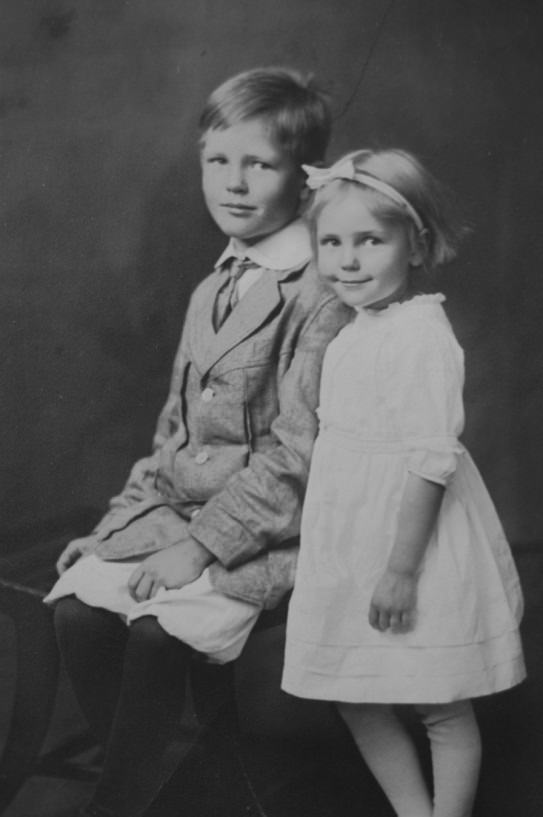
Our first story takes place soon after Hass learned how to multiply numbers in school. At one point it was mentioned that whenever you multiply a digit by 9, the answer’s digits always add up to 9. That is, in any of 9, 18, 27, 36, …, 81, the digits sum to 9. Hassler thought this was amazing. Throughout his life, the key to unleashing his scientific energy was to catch his fancy, and this remarkable fact did just that. He began to experiment with 9 times larger numbers, such as 9 times 10, 11, 12, 13, …, and summing the digits until you get a single digit still always ended up giving 9. He then tried really big numbers, like 9 times 8,213, and the phenomenon still held. He thought about this for a few days, and finally convinced himself that it was always true, no matter what big integer you multiplied by 9. He then tested the idea on multiplying 1, 2, 3, … by 8 instead of 9, and found that instead of always summing to 9, the sum decreased, getting a cycle that endlessly repeats: 8, 7, 6, 5, 4, 3, 2, 1, 9, 8, …. When multiplying by 7, the sequence went down by 2: 7, 5, 3, 1, 8, 6, 4, 2, 9, 7, …. Symmetrically, if he multiplied by 10, which is 1 more than 9, the sequence went up by 1: 1, 2, 3, …. Multiplying by 11 (2 more than 9) gave a sequence that increased by 2. Young Hassler was excited by finding these regularities, and he always regarded this as “my first little bit of mathematical research.”
log 2

Hassler moved to Switzerland when he was 14, and spent two years there. His older sister Caroline had always been extremely supportive of Hass, and before he moved she bought him a slide rule. In Switzerland, he began to think about just how his slide rule performs its magic. He learned about logarithms and some basic questions occured to him. He understood why \( \log 1 \) is 0 and \( \log 10 \) is 1, but what about all the other numbers? He decided that finding \( \log 2 \) would be an excellent project. According to the slide rule, it should be a little over \( 0.3 \), but how much over? Was there some way to find the value to a few decimal places, to get a better answer than the slide rule could? He cooked up a plan of attack. If you multiply 2 by itself a bunch of times to get \( 2^n \), then the logarithm of that is \( n\log 2 \); if you multiply 10 by itself a bunch of times to get \( 10^m \), then that has a very simple logarithm, just \( m \). His scheme was this: keep on doubling 2 until you get 1 followed by \( m \) zeros. At that point, \( n\log 2=m \), meaning that \( \log 2=m/n \). But as he doubled 2 over and over again, he soon realized that he could never get the last digit to be 0, since the last digit endlessly cycled 2, 4, 8, 6, 2, 4, 8, …. He certainly didn’t know this observation essentially proves that \( \log 2 \) is irrational! Nevertheless, he hoped for a good approximation. He got somewhat close when \( n \) is 10, 20, 30, 40, but after filling up page upon page computing powers of 2 and always missing his goal of beating the slide rule, he finally gave up. He really tangled with this problem, and gained a lot of respect for it.
Increasingly things were happening in math that seemed mysterious to him. He was close to his older sister Caroline, and in a letter he muses, “What are the logarithms of negative numbers? Do they have any relation to imaginary numbers? If they haven’t, I should think they would be pretty useful anyway.” Later, he begins to wonder why certain graphs have “excluded regions.” Even the parts to the left and right of a circle’s plot were excluded, weren’t they? Was it because of imaginary numbers, again? He was meeting more and more mysteries, and his subconscious was becoming prepared for answers.
Graphs
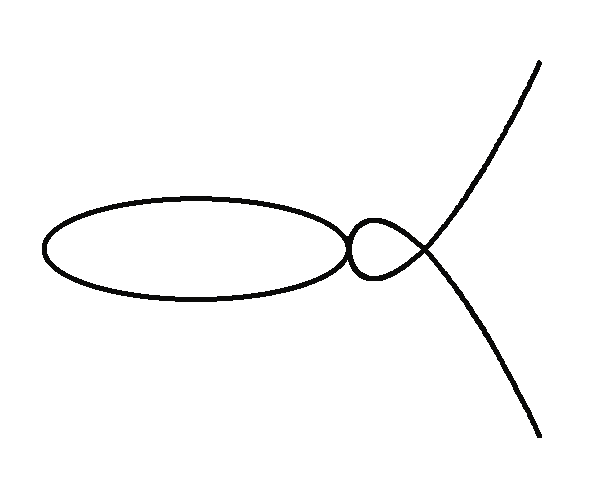
It delighted Hass to see that abstract combinations of symbols as in polynomials could be pictured geometrically. He would make up polynomials and use his slide rule to compute points on the graph, then connect the points to get the rest of the graph. When he stumbled upon \( y=1/x \), something weird happened — the graph (a hyperbola) broke up into two parts. Could he make up graphs that broke up into three parts? four? five? In a long letter to Caroline written over a few days from Switzerland, he chronicles his progress in this, and you can see his understanding beginning to grow. A little later he stumbles upon a different idea: replace \( y \) by \( y^2 \). Now, suddenly, the graph is symmetric about the \( x \)-axis. In exploring this idea, he happened to plot \( y^2=x^3+x^2 \). To his complete surprise, he found it looked like a bug’s head together with two antennae coming out! He’d been fascinated by bugs and crawly things ever since he’d been a small boy, and now an equation could replicate some of that. He was on a roll, and wanted some way to give the bug a body. He eventually realized that if you plot \( f(x,y) = 0 \) and \( g(x,y) = 0 \), then the union of the two plots is given by the plot of \( fg = 0 \). So by appropriately multiplying equations, he was able to add an ellipse-shaped body to the head. Using this same idea, he could add small circles or ellipses to represent dots of the kind you see on a ladybug.
Mostly a handbook
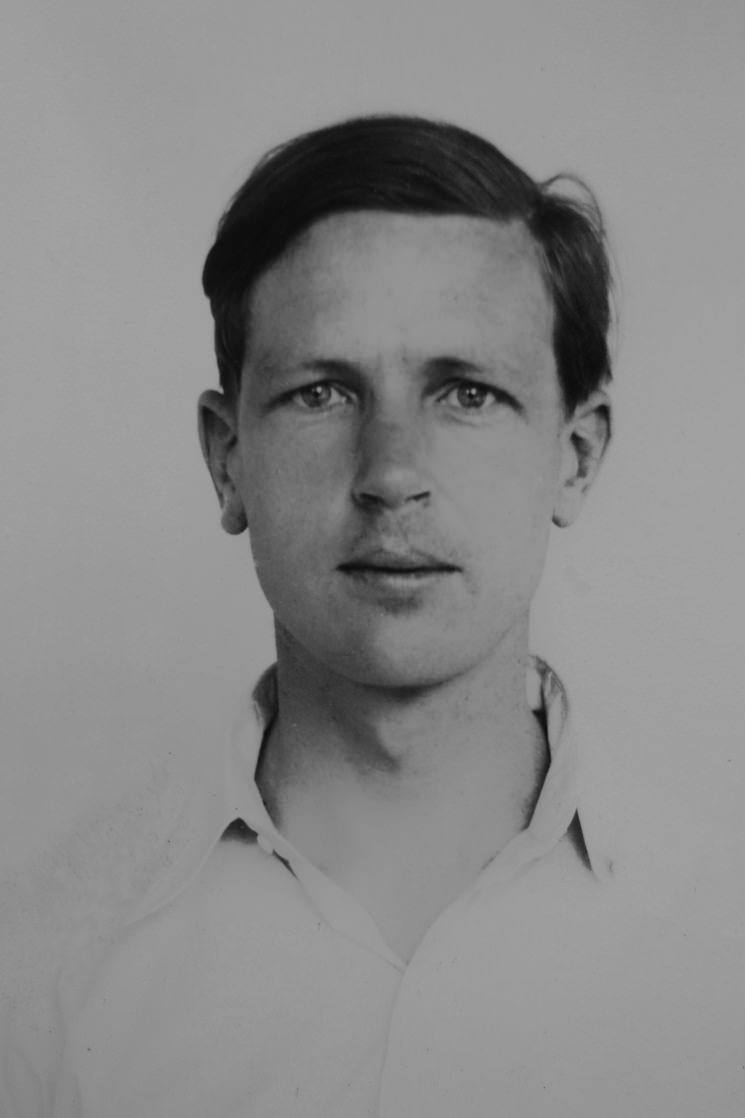
Hass returned to the States in 1923, and had just one more year before entering college at Yale. His hankering for measuring things now extended to finding lengths of various curves. By this time he knew that calculus could help in finding lengths, areas and volumes. He owned a calculus book, but had not the slightest inclination to sit down and read it, or go through exercises in it. For him, the book was a resource, a handbook that he might use to help solve problems that interested him. One such problem he thought about was this: “If an ant crawls along one arch of the sine curve, how far has it travelled?” After setting up the correct integral, he found that nowhere in the table of integrals at the back of the book was there anything that could solve the problem for him. He ended up with an approximation, essentially getting the lengths of small pieces of the curve and adding them up.
Experiences of this sort made him quite a bit wiser than students who would read about arc length, do the book’s problems, get the right answers, take a test and receive an “A”. “They come away thinking they can find arc lengths! Gee, the book carefully chooses problems so the students see only those rare examples where things work out nicely. They can go the rest of their life having a totally unrealistic view.”
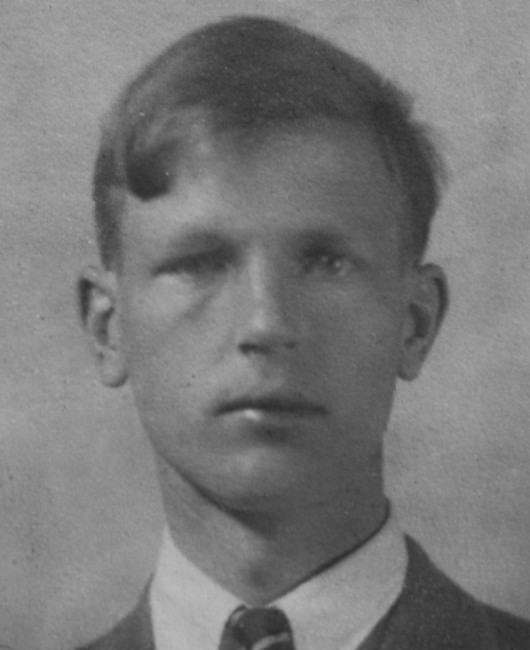
In 1928, after four years at Yale, Hass graduated as a physics major. He took an additional year there to earn a second Bachelor’s degree, this time in music. But he’d made his career choice — theoretical physics. Before completing his music degree, he decided to spend three weeks in the summer of 1928 to breathe in and absorb the atmosphere of physics and mathematics in Göttingen, Germany. As a sophomore, he had taken a graduate course entitled “General theory of mathematical physics,” and had taken voluminous notes filling up five binders. He took these with him, since it seemed that refamiliarizing himself with them would give him a running start at Harvard. He felt comfortable in Göttingen, and immediately made friends with Dirac. The two shared time puzzling over little number-theory problems.
After a week of enjoying himself, it was time to blitz through those five binders. Day 1: he was astonished to discover he had forgotten nearly everything in the notes. Day 2: things still weren’t coming back to him. Day 3: ditto, but he still had nearly two weeks. After additional days of struggling, a horrible reality was beginning to emerge: in physics, you have to remember stuff, and it seemed he actually had no head for that. Halfway through the second week of this, he essentially threw up his hands in despair and asked himself, “What am I gonna do?”
He definitely wasn’t enjoying this, and he began taking serious stock of himself. What were his stellar moments? his worst moments? His biggest high points at Yale never occurred in physics, but rather in mathematics. For example, in one class taught by the legendary James Pierpont, the famous man singled out Hass: “Mr. Whitney says he ‘just’ learns math on his own! How did Riemann learn mathematics? How did Weierstrass do it? Just like Whitney here, on their own! That’s the very best way!” Another time, Hass had turned in an especially ingenious example of an everywhere discontinuous function. Pierpont held it up as an example of “pure genius.” Hassler’s worst moments were in required history courses — for years he actually had nightmares about not being able to remember things for an upcoming history exam. And what did he really love to do? A fellow student at Yale had once mentioned the four-color conjecture, and it fascinated him. He greatly enjoyed thinking about the problem in odd moments. To him, it was recreation. Plus, no one had ever solved it, so there was a carrot dangling in front of him. Looking back on what he was good at and what he enjoyed, it seemed that thinking about mathematics problems checked both boxes.
After perhaps the most uncomfortable few days in his life, Hassler made a decision: his life would be in mathematics, not physics. Toward the end of his career he reminisced, “I have always regretted my quandary, but never regretted my decision.”
Graduate student at Harvard
Once at Harvard, he immediately switched to mathematics and began thinking about the four-color problem. He put the problem into a different form: he replaced each colored country by a colored capital, and, if two countries shared a common boundary, he drew a road connecting their capitals. Essentially, he was thinking about colored graphs. The goal was that, by using just four colors, you can color the capitals so that the road from one country to a neighboring country would always connect differently colored capitals. This area had really caught his fancy, and although he enrolled in courses and attended them, his real effort was spent thinking in an area that had captured his imagination.
George Birkhoff
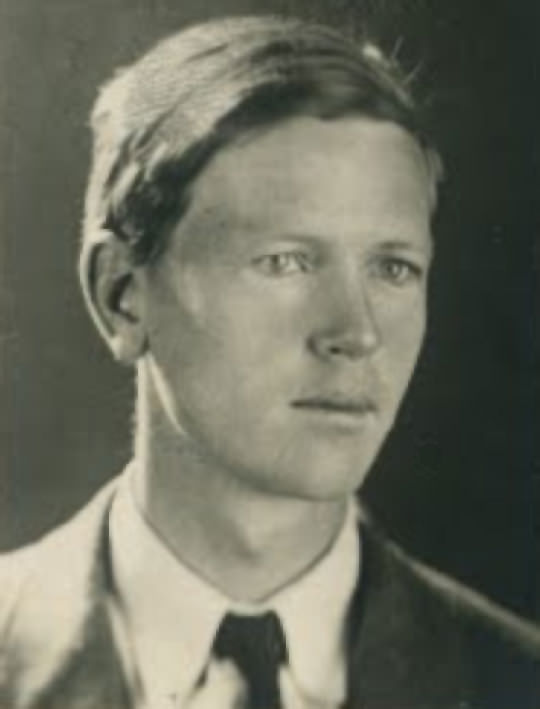
Hass worked by himself for many weeks on the problem, making countless drawings with capitals represented by colored points. From all these drawings, he used his natural ability to make conjectures, test them, and arrive at some results that appeared to be new. Of course his main aim in going to graduate school was to get a Ph.D., and he needed an advisor for that. He asked around and soon learned that George Birkhoff fit the bill. Birkhoff had done some work on the four-color conjecture, so Hass paid him a visit, and showed him the results he had obtained.
Birkhoff immediately recognized that Hassler, completely on his own, had come up with some insights that Birkhoff himself had totally missed. Birkhoff in turn shared with Hass some of his own insights he’d gotten earlier, and the two fell into a symbiotic friendship. Hass says in a letter, “Birkhoff, more than anyone else in the world, thinks the same way I do!” Every so often, Hass would drop by and show Birkhoff his latest results. After a while, Hassler felt he’d progressed far enough on the problem to warrant writing it up as his thesis. Birkhoff went over the top with enthusiasm: “With what the two of us have here, I estimate there’s a one-in-five chance that we’ll prove the four-color conjecture!” Hass was more cautious, and felt a proof was at least 50 years away. He wasn’t far off — Appel and Haken announced their computer proof in 1976, just 46 years after Whitney’s guesstimate.
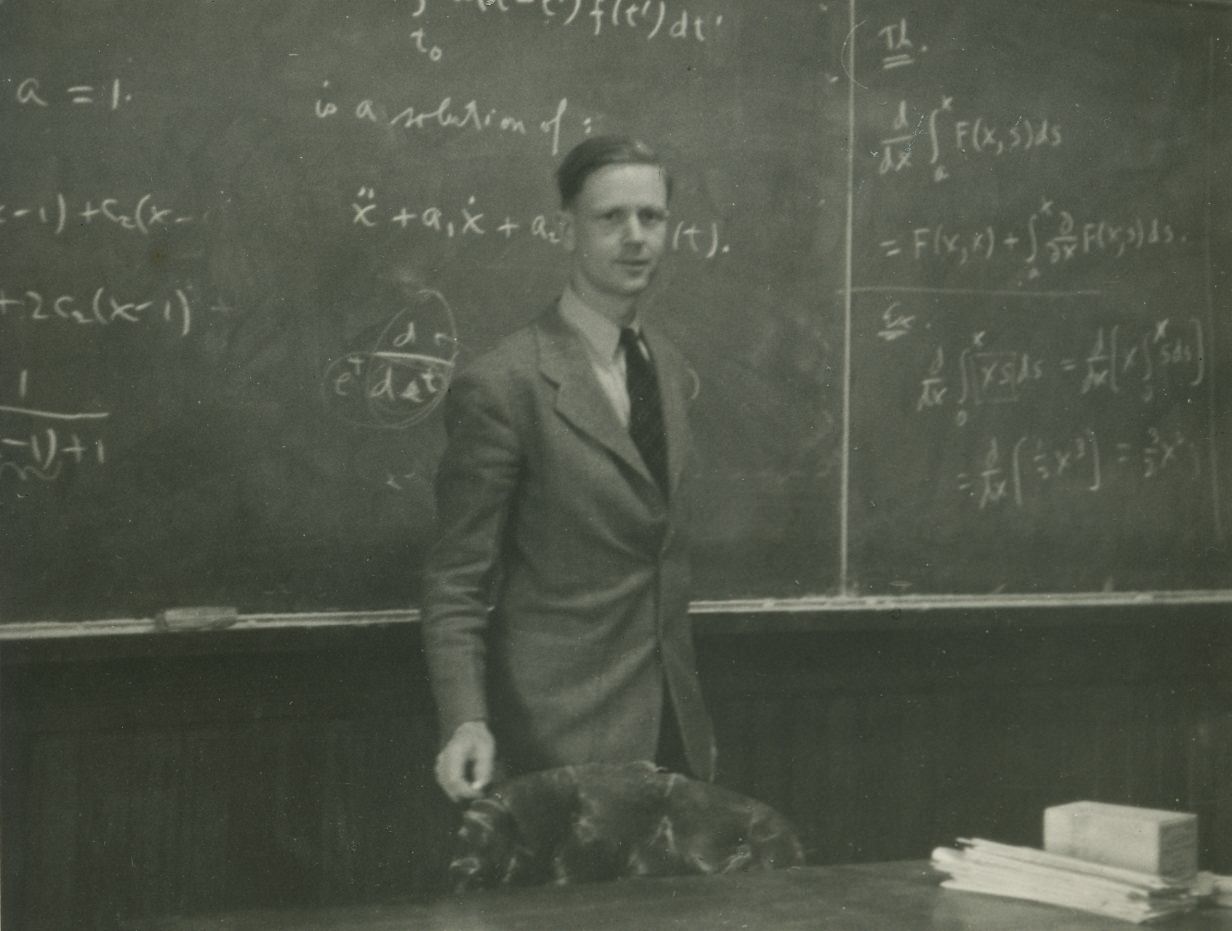
Birkhoff gave Hass some extremely helpful advice: “Write up the high points of your work right away, and submit it to the Proceedings of the National Academy of Sciences. Neither of us would want someone to anticipate your results. Then, after that, write up a more complete account with full proofs, and submit that to the Annals.” Hass had his work cut out for him, but by following his inner urgings and arriving at new results about a problem he loved thinking about, he ended up with three papers [2], [3], [1] in those excellent journals. Earlier, Birkhoff had gotten him an Instructorship at Harvard, paying \$3,000 for the year. Now, he wrote a letter “that couldn’t be stronger,” recommending Hass to the position of Assistant Professor at Harvard for the three years 1934–36, with wages of \$4,000, \$4,300 and \$4,600 — not bad numbers in those days. Hassler’s initial teaching schedule was not especially demanding, consisting of a course on calculus and one on differential equations. He was given plenty of time to think mathematics.
“Real mathematics”
Despite his love for and progress on the four-color problem, Hass never intended to spend his entire career on it. In him was a need to do something he thought was “real mathematics,” in the sense of more traditional analysis — something that would involve differentiable functions. After all, he had spent years in physics working with polynomials, trigonometric and exponential functions, and they were his friends. He began to keep an eye out for some problem involving differentiable functions that would catch his fancy. It had to be elementary, simply stated, require little extra background to make progress, and involve differentiable functions in some way.
His quarry proved surprisingly elusive, but after a few months he finally stumbled upon what he wanted: an eight-page article written by William Whyburn that generalized the Tietze extension theorem for continuous functions, to certain differentiable ones. (In Euclidean \( n \)-space \( \mathbb E^n \), the Tietze theorem says that a function continuous on a closed set in \( \mathbb E^n \) has a continuous extension to all of \( \mathbb E^n \).) This article, “Non-isolated critical points of functions” [e1] which appeared in the Bulletin of the AMS 35 (1929), pp. 701–708, inspired Hassler to ask two big, central questions: (1) If in some sense a function is \( n \)-times differentiable on any closed set of \( \mathbb E^n \), can it be extended to an \( n \)-times differentiable function on all of \( \mathbb E^n \)? (2) If the function is analytic on the closed set, is there an analytic extension to \( \mathbb E^n \)? The answers would be significant no matter how they turned out.
In what can now be called classic Whitney style, he considered lots of examples, drew many pictures, considered many ways of creating extensions, and through persistence finally got local extensions to match up properly. It was a breakthrough for him, and a breakthrough for mathematics. He admits, “It wasn’t that easy,” but in 1934 his 27-page article [4] appeared in the Transactions of the AMS. His next four papers also came out in 1934, and were all in this genre, one appearing in the Bulletin of the AMS, one in the Transactions and two in the Annals of Mathematics. The year 1934 was a good one for the 27-year-old.
Extension theorems
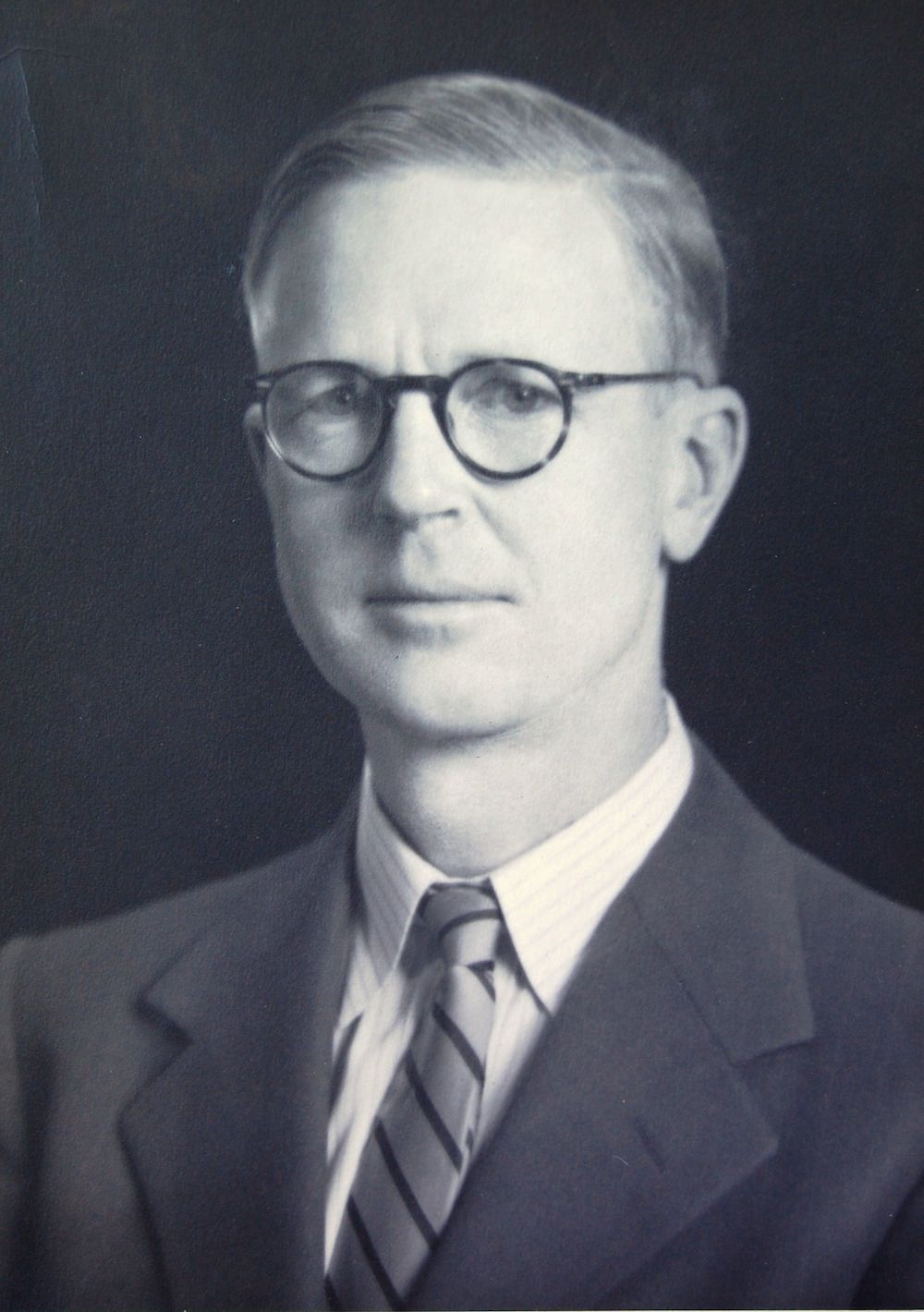
By 1930 there were several competing definitions of a differentiable (or smooth) manifold, and in 1932 Veblen and Whitehead had devised an abstract definition that unified the different approaches and had the aim of supplying differential geometry with a more solid and updated foundation. Whitney was always one for concreteness, and he, as well as others, wondered if the abstract definition was really necessary. Did it actually include new objects, objects other than those manifolds already sitting in some Euclidean space? If not, then the abstract concept could simply be discarded, meaning any differentiable manifold could be defined in some Euclidean space of high-enough dimension, using patches glued together by diffeomorphisms on their overlapping parts.
As fortune would have it, Hassler’s work on extending differentiable functions provided some essential tools needed in answering the question. In 1936, he was able to prove [5] that any \( n \)-dimensional compact connected differentiable manifold, in the sense of Veblen and Whitehead, could in fact be realized as a subset of a Euclidean space of dimension \( 2n+1 \). Eight years later [7], using methods from algebraic topology, he was able to prove a stronger form, reducing the \( 2n+1 \) to \( 2n \).
A simple case of the stronger theorem would be a fancy knotted loop in a real space of any dimension, the loop being differentiably embedded there. In this case \( n=1 \), so the theorem guarantees a diffeomorphism between it and, say, a circle in \( \mathbb E^{n} \), which is the real plane.
For other examples, consider familiar manifolds such as the Klein bottle or the real projective plane. The Klein bottle can be obtained by cutting a torus to make a long hose, and then reconnecting the two circular, freshly-cut boundaries so their orientations are opposite. A real projective plane can be constructed by sewing together a Möbius strip and a disk along their circular boundary. Both the Klein bottle and the real projective plane are \( n \)-manifolds with \( n=2 \), and neither of them can be realized in ordinary 3-space without self-intersections. Whitney’s stronger embedding theorem guarantees that each of them can exist in \( \mathbb E^{2n}=\mathbb E^4 \) as a smooth, and therefore non-self-intersecting, manifold. Actually, there’s what might be called a “poor man’s version” of an embedding — an immersion — that permits well-behaved singularities, and in this case Whitney showed the dimension can be lowered to \( 2n-1 \). For example, a glass model of the Klein bottle in ordinary 3-space \( \mathbb E^3=\mathbb E^{2\cdot2-1} \) represents an immersion of the Klein bottle in 3-space. The circle where the handle intersects the main part of the bottle is a transverse intersection, which is sufficiently nice.
An essential step in Whitney’s original \( 2n \) theorem is the famous “Whitney trick.” A description of this by Robion Kirby can be read here.
Embedding a manifold has important consequences
Whitney’s embedding theorem changed the landscape of manifold theory. Since any manifold can now be put in some Euclidean space, the manifold inherits a metric from that surrounding space. At any point \( P \) of the manifold, it makes sense to talk about a point \( Q \) close to \( P \), and therefore also the line through \( P \) and \( Q \), as well as the limit line as \( Q \) approaches \( P \), and therefore the tangent space to the manifold at any one of its points \( P \). Since the ambient space is Euclidean, there’s also the vector space of all vectors normal to the manifold at that point \( P \). This pointwise orthogonal decomposition was to play an important role in Whitney’s subsequent research.
The metric also means we can define within the tangent space such things as a sphere about \( P \). The same can be done within the normal space. Doing this at each point of the manifold so that the union is smooth yields tangent sphere bundles and normal sphere bundles. One can also form products at each point; these are local products. For example, at each point of a loop in 3-space, one can construct a unit interval perpendicular to the loop, the intervals varying smoothly along the loop base space. Globally, there are two distinct topological ways to do this, giving on the one hand a topological cylinder, and on the other a Möbius strip. One can assign a degree of twisting or torsion to each possibility, 0 to the cylinder and 1 to the Möbius strip. This can be recast into the language of spheres: an interval is a 1-ball, and its two-point boundary is a 0-sphere. If the strip is given an even number of half-twists, the 0-spheres form two topological loops, whereas an odd number yields just a single loop. 0 and 1 can naturally be regarded as the group elements of the integers mod 2.
It seemed likely that this phenomenon also occurs in higher dimensions, and that there ought to be a way to similarly quantify the behavior. Eventually, a vector over the integers mod 2 captured the torsion information within a more general sphere bundle — essentially a Stiefel–Whitney characteristic class. All this is very much connected to the homology of sphere bundles. Soon, Whitney found a way to express things in a more powerful and natural way using cohomology.
Duality
Duality played a big part in Whitney’s mathematical research. Even in his first musings about the four-color problem, he transformed a geographical map — a planar graph — into its dual, and mostly worked with that. A map naturally divides the plane into a simplicial complex, and associated to each \( r \)-simplex is a \( (2-r) \)–simplex: a country is a 2-simplex, and its associated dual \( (2-2)=0\, \)-simplex (a point) is its capital. The boundary between two countries is a 1-simplex, and its dual is a \( (2-1)=1\, \)–simplex (a road) crossing the boundary transversally. A vertex of the original graph dualizes to the 2-simplex in the new graph that contains that vertex. (This idea is familiar to electrical engineers, who often form the dual of a planar electrical circuit to simplify solving a problem.)
He was able to generalize this key idea to simplicial complexes of any dimension \( n \), in which associated to any \( r \)-simplex is a dual \( (n-r) \)–simplex. Importantly, the homology of the original complex is essentially the same as the cohomology of the dual complex, and now Whitney massively pushed forward existing homological frontiers. A few years earlier, Poincaré’s Betti numbers had been given a group structure by Emmy Noether, and now Whitney was able to define a product (the cup product) so that the direct sum of cohomology groups became a cohomology ring. Topological invariants of a manifold could now be expressed in a more natural way using the manifold’s cohomology ring.
In 1935, Whitney attended the International Conference in Topology held in Moscow and learned that J. W. Alexander and A. N. Kolmogoroff had independently proposed a way to form products of simplicial complexes. This greatly interested Whitney, but he felt something wasn’t quite right about their definition. Together with E. Čech, Whitney fixed things, thus opening up the way for geometric operations on bundles. With the definitions and tools that Whitney now had, he was eventually able to describe characteristic classes of the Whitney sum of two bundles — a central result now known as the Whitney Product theorem.
Institute for Advanced Study

In 1952, at age 45, Hass accepted an offer from the Institute for Advanced Study in Princeton to join the faculty “without term” — meaning he was invited to become a permanent member. There were some big projects that he had always wanted to work on, and this piece of good news would allow him to pursue these without having to prepare lectures or grade papers.
One of these projects was to expand into a book his well-received 41-page account of his work on sphere bundles [6], which appeared in Lectures in Topology, Univ. of Michigan Press, 1941. To prepare a foundation for the book, he wrote the book Geometric integration theory [9], which addresses issues of integration on manifolds having singularities. Although the book is full of original geometric ideas, he nevertheless felt there remained nontrivial difficulties in arriving at a satisfactory geometric foundation for the topological side of his proposed book on sphere bundles. To his immense relief, Norman Steenrod eventually came out with an outstanding book on fiber bundles. Hass said, “Steenrod did a far better job than I could possibly have done.”
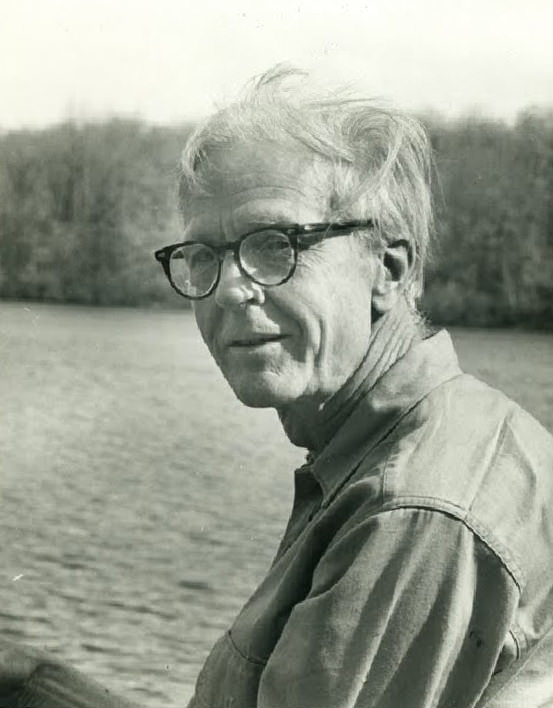
At the Institute, his first big paper was “Mappings of the plane into the plane” [8], which appeared in the Annals in 1955, (vol. 62, pp. 374–410). This paper can be looked at as an early harbinger of chaos theory, since it was a starting point for René Thom’s catastrophe theory which, in turn, describes a centerpiece of chaos theory — bifurcations.
In another direction, he had proved much earlier that \( n \)-dimensional manifolds could be immersed in \( (2n-1) \)-space, the immersion permitting certain singularities. He realized that assuming manifolds were always smooth was too restricted — lots of naturally occurring sets had singularities as part and parcel of their nature, algebraic varieties being one ubiquitous example. He saw that such sets often naturally break up into simplicial complexes. One simple example harkens all the way back to his teenage musings about graphing polynomials — the real “alpha curve” defined by \( y^2=x^3+x^2 \) that looked like a bug’s head with two antennae coming out. The part of this curve corresponding to nonzero \( x \) naturally falls into three parts: the two antennae and the head — each of these pieces is a topological open 1-cell. The singularity at the origin naturally defines a 0-cell.
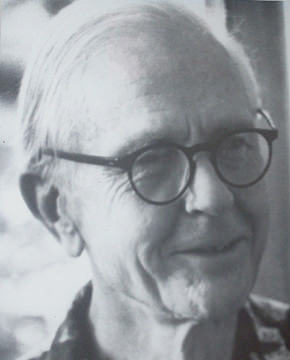
This idea extends easily to higher dimensions, as well as to the complex setting. Hass wrote up his ideas, eventually appearing as a 1965 Annals article, “Tangents to an analytic variety” [10]. Hass wanted to lay the foundations for a stratification theory at the analytic-variety level, and as a background for this he wrote his second and final book, Complex analytic varieties [11]. Whitney was far-sighted and sensed that stratified manifolds would play an important role in the future. In 1994 the leading differential geometer S. S. Chern wrote that he felt stratified manifolds would eventually be the main objects of study in differential geometry. “They already play an important role in MacPherson’s theory of perverse sheaves,” he said.
Beyond research
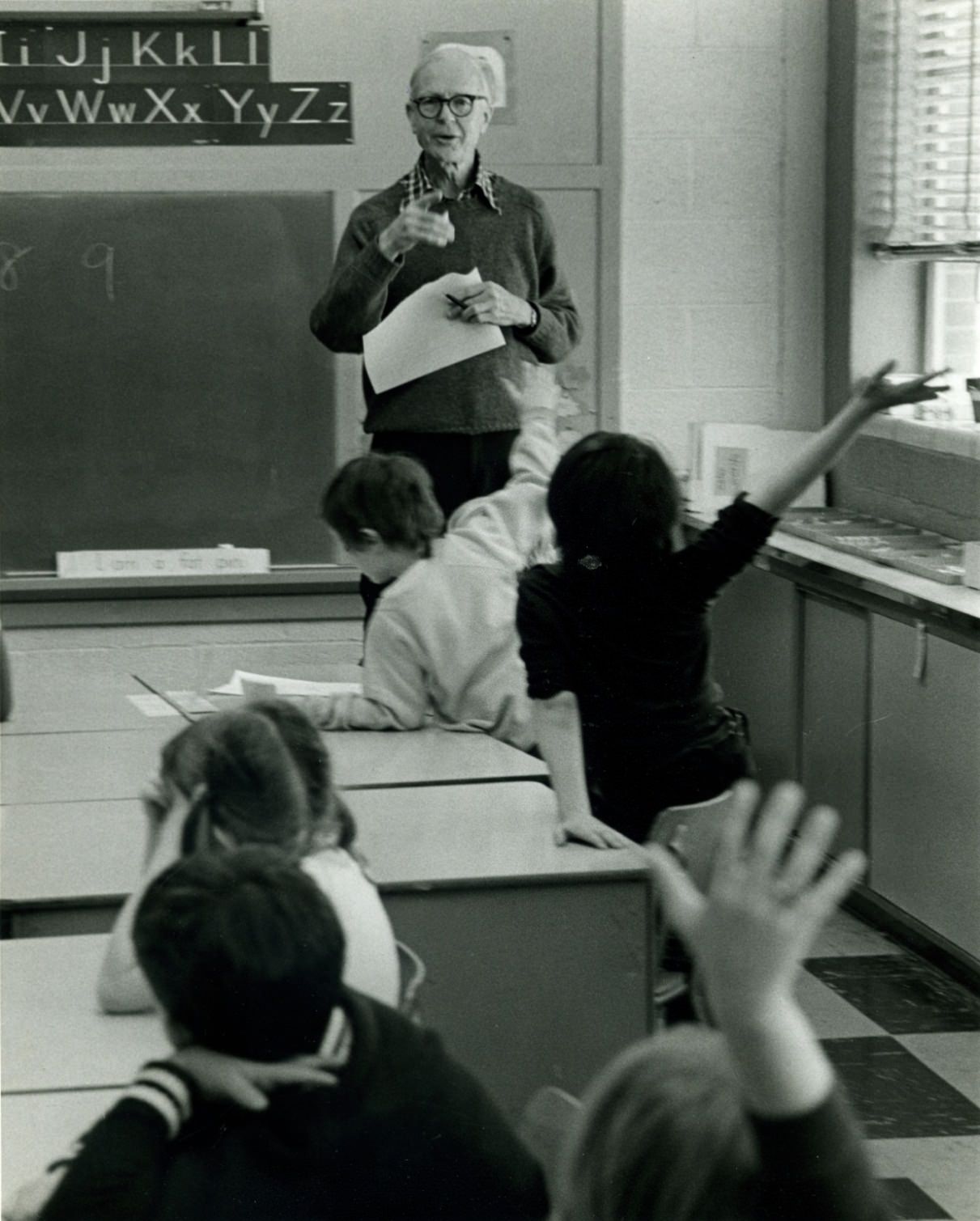
Throughout his life, Hass showed little interest in hobbies. What he had were passions: he was passionate about math, music, mountaineering and ice skating.
Around the age of 60, after he had mostly completed his contributions to mathematical research, he happened to pay a classroom visit to see how his two daughters, Sally and Emily, were being taught math. He was appalled by what he saw: elementary school kids were being forced away from their natural instincts of reasoning and learning from experience — the mode that served them so well in learning an incredible amount in their preschool years — and made to “do” math according to a new and strange classroom regimen, where they were being taught to use their pencils rather than their heads. He wondered, “What would have happened to me, had I been forced through such a system?” He did some research and found that the national situation was even worse than he had guessed. For example in one large study, 9-year-olds were asked to find how much fence was needed to enclose a \( 10^{\prime} \) by \( 6^{\prime} \) rectangle, and a pitiful 9% of the kids got the right answer. “Heavens, if their mom or dad were planting a garden in that shape and asked their little one to see how much fencing was needed to go around to keep the animals out, one’s natural instincts could well have led to the right answer. But in a classroom? It was all algorithms, computation, timed tests, …” Such realizations planted the seeds for his last great calling and passion in life: changing the way young kids were exposed to and taught math. He saw it as a challenge of the highest importance. Always proactive, Hass spent his remaining years traveling within and outside the States, teaching math in elementary schools and running workshops with the aim of improving mathematics education.

Hassler suffered a stroke at age 82 in Princeton (not Switzerland, as some internet sources say), and died two weeks later. He had apparently been in good health, and physicians ultimately placed the blame on treatments for prostate cancer. A fellow climber placed his ashes atop Mt. Dent Blanche in Switzerland.
It is a pleasure to acknowledge the help and input from Hassler’s children: James, Carol, Molly, Sally and Emily — as well as his widow Barbara Osterman. They have shared with me invaluable reminiscences, and most of the photos would have been impossible to obtain without their help. In addition, they have critiqued various drafts of the biography. My great thanks to them all.